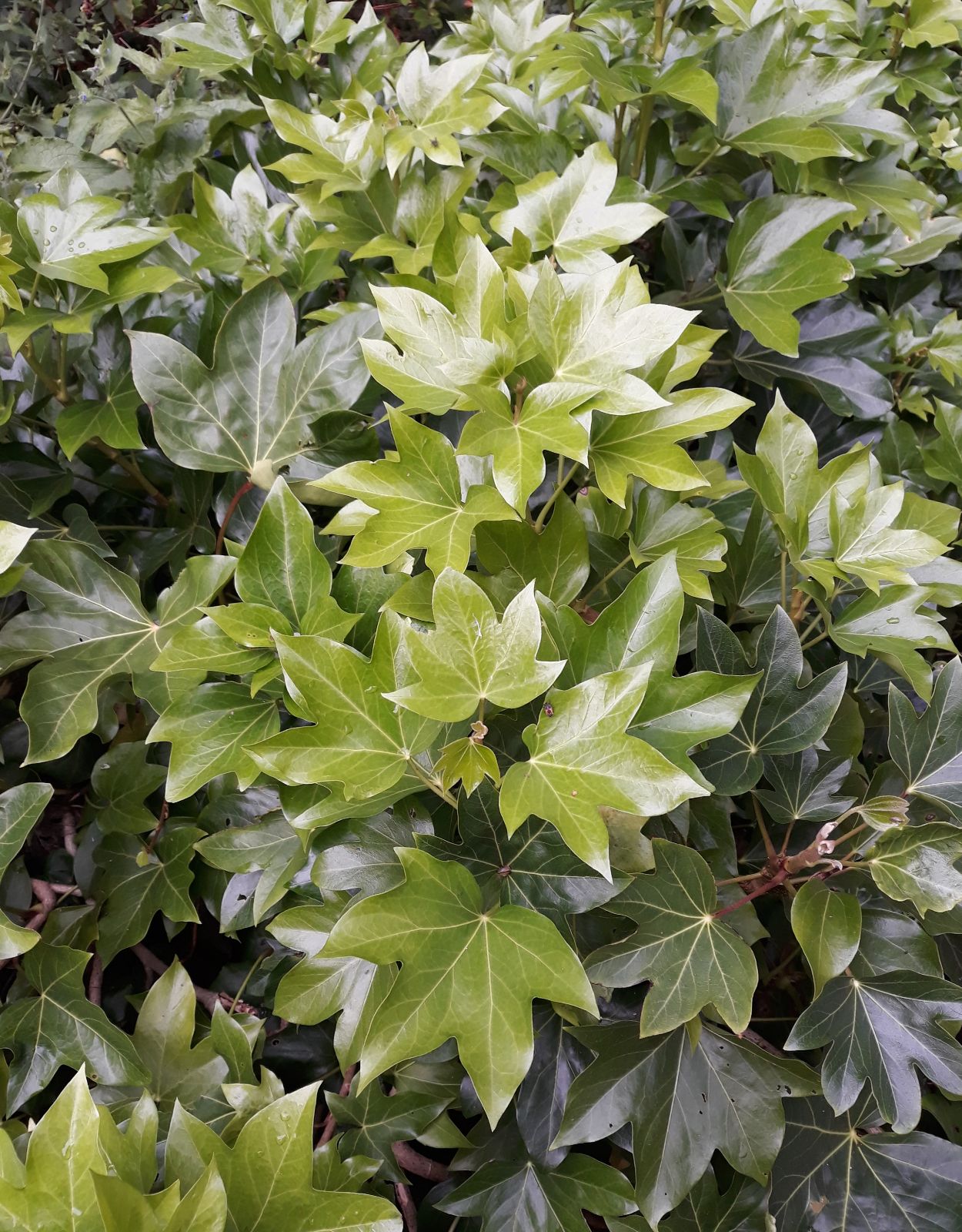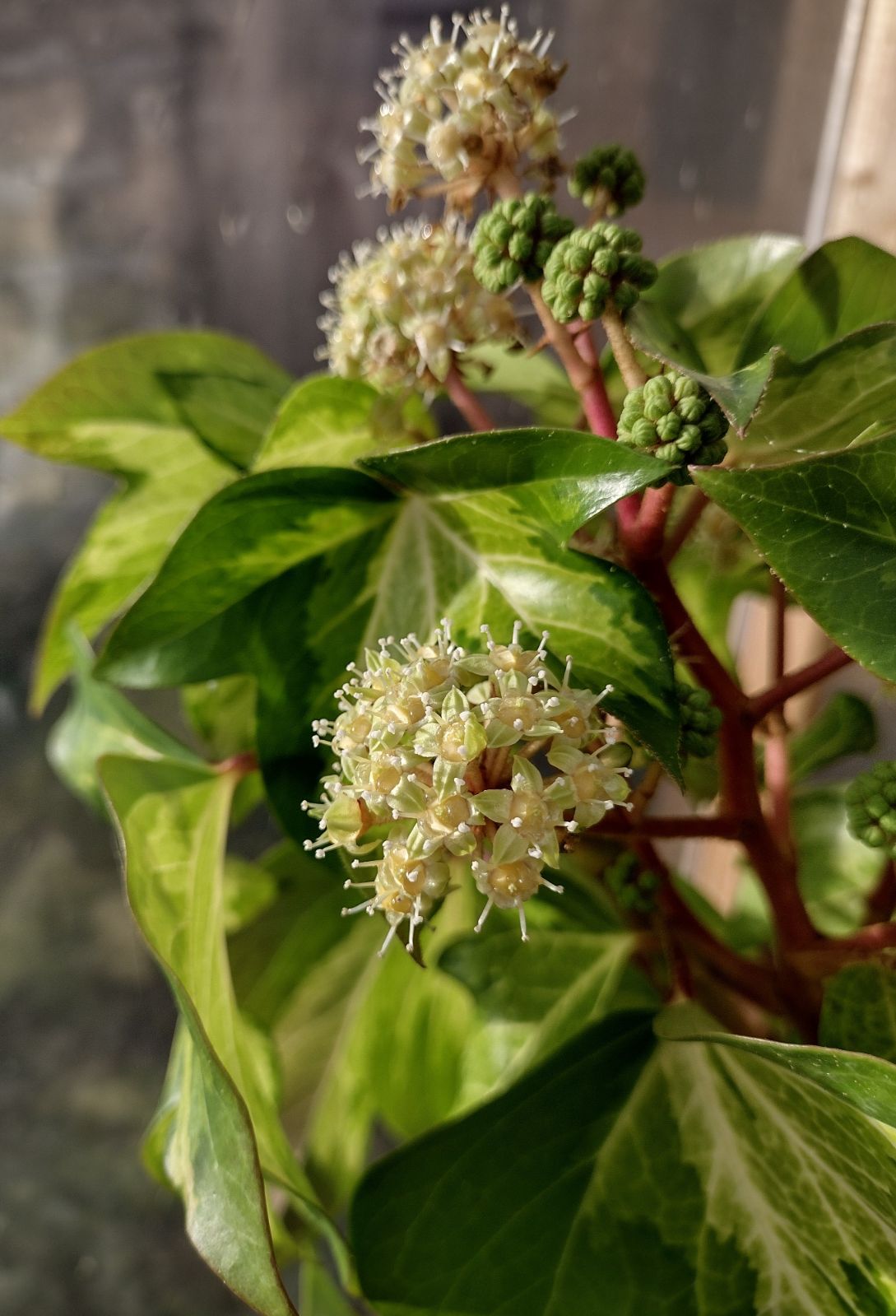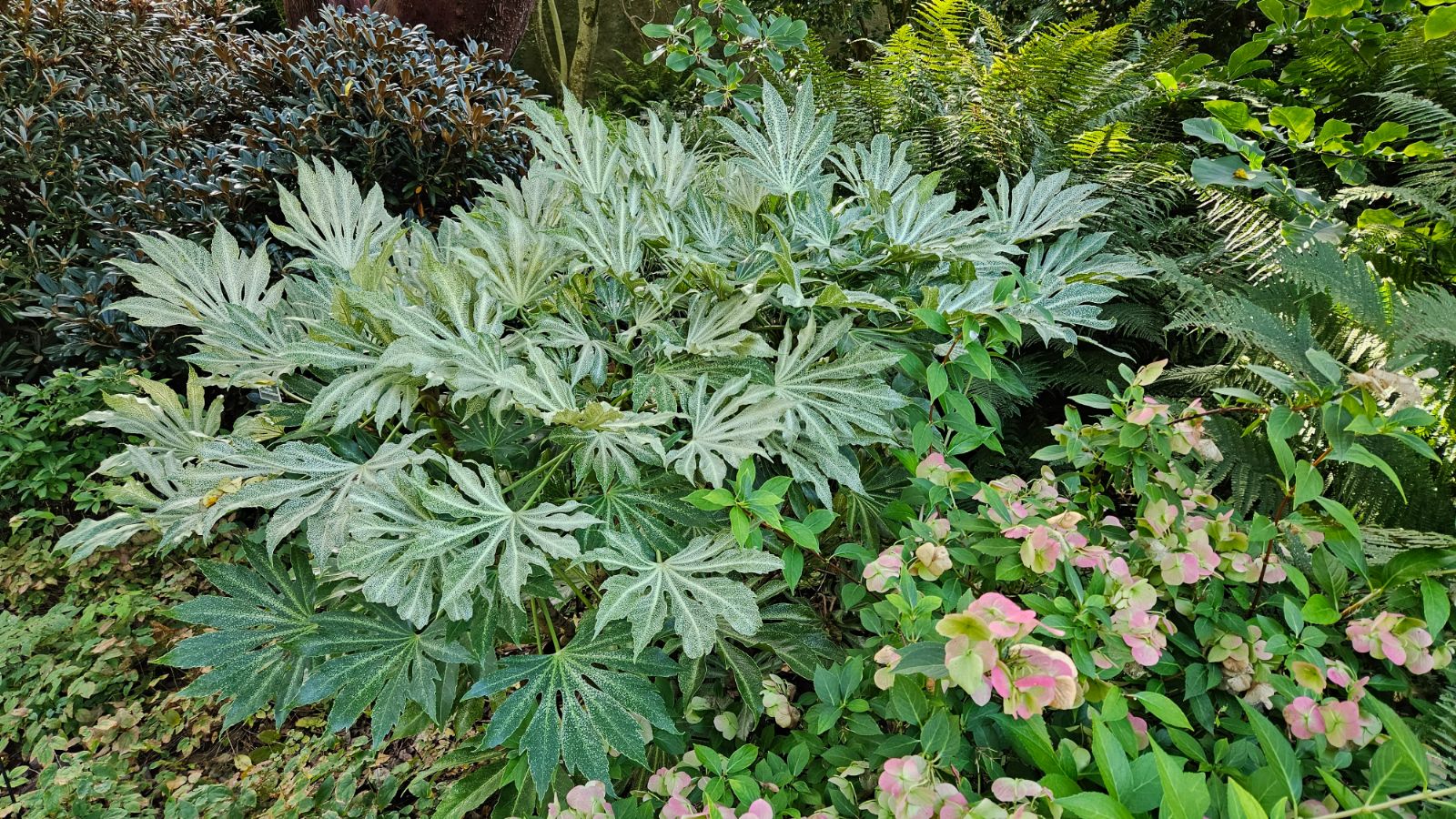× Fatshedera lizei
Credits
Article from Bean's Trees and Shrubs Hardy in the British Isles
Recommended citation
'× Fatshedera lizei' from the website Trees and Shrubs Online (treesandshrubsonline.
Genus
Awards AGM
An evergreen shrub of loose free growth, with stout young shoots that are 3⁄8 in. or more in diameter, downy at first and thickly furnished with warts. Leaves from 4 to 10 in. across, scarcely so much long, of leathery texture, dark glittering green, five lobed in palmate fashion, the lobes reaching one-third or half-way to the base; stalk terete, about as long as the blade, often purplish. Flowers produced in October and November in a terminal panicle, 8 to 10 in. long and 4 in. wide, made up of numerous hemispherical umbels. Each umbel is 1 in. in diameter and carries from one dozen to three dozen flowers which, individually, are 1⁄4 in. wide; petals five, ovate, pale green finally much decurved; stamens five, sterile. The centre of the flower is occupied by a large green disk, in the centre of which the ovary is set. Flower-stalks thinly covered with loose branching down. Fruit not borne. Bot. Mag., t. 9402.
This interesting plant is a hybrid raised in 1910 by Messrs Lizé Frères, nurserymen, of Nantes, by crossing Fatsia japonica ‘Moseri’ with the pollen of Irish ivy (Hedera helix ‘Hibernica’). Some doubt has been expressed as to the authenticity of this origin, but Guillaumin states (Rev. Hort. (1924), p. 180) that ‘Messrs Lize’s plant, showing morphological and anatomical characters of both Hedera and Fatsia also intermediate ones, appears to be truly a hybrid between the two genera. The constant sterility of the stamens supports this opinion.’ Its general appearance certainly suggests this parentage, as also does its mode of growth for although Fatsia japonica is a very sturdy shrub, this hybrid has inherited enough of the scandent nature of the ivy to render the support of a stake necessary to keep it upright. For a further discussion see the article accompanying the plate in the Botanical Magazine, where the question of the parentage of this plant is left open.
× F lizei is a handsome evergreen, grows vigorously and, judging by its parentage, should prove useful for shady situations and for town gardens. It has been cultivated at Kew for many years and has never suffered from cold; both its parents are indeed very hardy. The flowers, however, come so late in the season that often they do not open. It is very easily increased by cuttings and useful for furnishing very shady places where flowering shrubs will not succeed. Repeated pruning in its young state would probably give it a bushy shape. There are white-variegated forms in commerce.
'Annemieke'
Awards
AGM
Leaves with central variegation.
'Variegata'
Awards
AGM
Leaves with creamy-white marginal variegation and a generally greyish cast.



